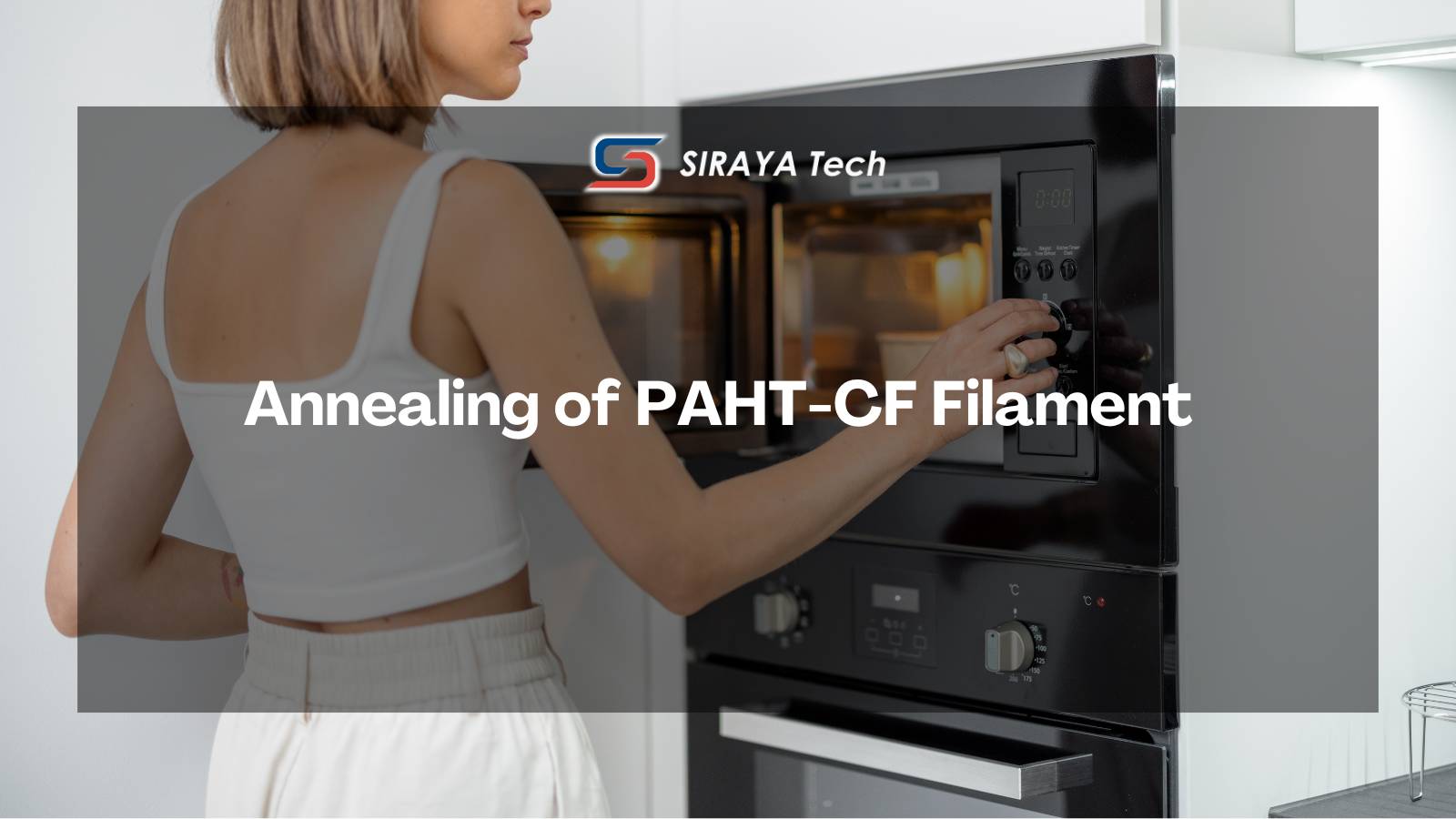Siraya TechのPAHT-CFのような高性能フィラメントを使用する場合、3Dプリントで最高の結果を得るには、アニーリングの概念を理解することが不可欠です。PAHT-CFは、炭素繊維で強化されたポリアミドフィラメントで、優れた強度、耐熱性、寸法安定性を実現するように設計されています。しかし、これらの特性を最大限に引き出すには、アニーリングがしばしば必須のステップとなります。
アニーリングとは何ですか?
アニーリングとは、材料を特定の温度まで加熱し、その後ゆっくりと冷却する熱処理プロセスです。3Dプリント部品の場合、このプロセスは、特にPAHT-CFのような高性能材料において、プリント中に蓄積される内部応力を軽減します。アニーリングの目的は、プリント部品の機械的特性を向上させ、強度と耐久性を高めることです。
PAHT-CF フィラメントにとってアニーリングが重要なのはなぜですか?
PAHT-CFフィラメントは、高い強度と耐熱性が求められる用途向けに特別に設計されています。しかしながら、FDM(熱溶解積層法)印刷プロセスでは、急速な冷却と炭素繊維強化材の複雑な性質により、印刷部品内に内部応力が生じる可能性があります。これらの応力は、最終製品の機械的特性と寸法精度を低下させる可能性があります。
PAHT-CF 印刷部品をアニーリングすると、次のことが可能になります。
- 強度の向上:アニーリングは内部応力を緩和することで、3Dプリント部品の引張強度を高めることができます。これにより、機能プロトタイプ、自動車部品、工業部品など、要求の厳しい用途にさらに適した材料となります。
- 耐熱性の向上:アニーリング処理により、PAHT-CF部品の耐熱性をさらに向上させることができます。これは、使用中に高温にさらされる部品にとって特に重要であり、形状と機能の維持に役立ちます。
- 寸法安定性の向上: PAHT-CF部品はアニール処理後、反りや収縮が起こりにくく、印刷された寸法が正確に維持されます。これは、他の部品と正確にフィットする必要がある部品にとって非常に重要です。
- 高応力アプリケーションのパフォーマンスを最適化:炭素繊維強化とアニーリングの組み合わせにより、PAHT-CF は強度と熱安定性の両方が求められる高応力アプリケーションに最適な選択肢になります。
Siraya Tech PAHT-CF フィラメントをアニールするにはどうすればよいですか?
PAHT-CF フィラメントを適切にアニールするには、次の手順に従います。
- オーブンを予熱します。印刷の特定の要件に応じて、オーブンの温度を約 90 ~ 100°C に設定します。
- 部品をオーブンに入れる:オーブンが希望の温度に達したら、3D プリントした部品を平らな耐熱面の上に置きます。
- 温度維持:パーツをオーブン内で4~6時間保温します。正確な時間は、プリントのサイズと厚さによって異なります。
- ゆっくり冷却する:アニール時間が終了したら、オーブンの電源を切り、部品をオーブン内で室温までゆっくり冷却します。急速な冷却は新たな応力を発生させる可能性があるため、避けてください。
PAHT-CFプリントを丁寧にアニール処理することで、その性能を大幅に向上させ、困難な用途の要求を満たすことができます。この処理により、既に堅牢なPAHT-CFフィラメントは、産業用途や機能用途においてさらに信頼性が高まります。アニール処理後の材料特性については、こちらに掲載されているSiraya Tech PAHT-CF TDS (全材料データシート)をご覧ください。
Siraya Tech PAHT フィラメントはこちら: PAHT-CF FDM フィラメント

